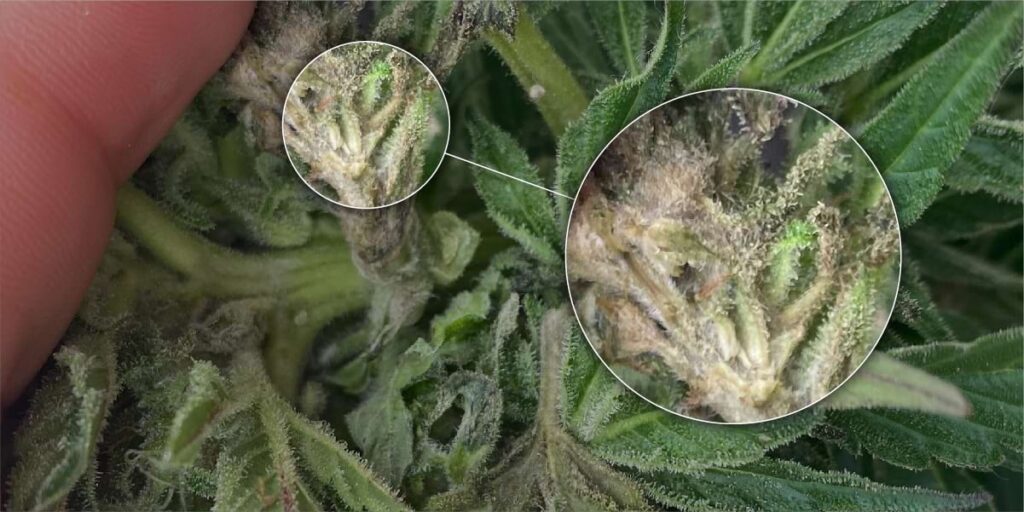Bud rot, known scientifically as Botrytis cinerea, is one of the most significant threats to cannabis crops, especially during the critical flowering phase. This fungal pathogen can decimate yields and diminish the quality of harvests, making it essential for growers to understand its nature, causes, and effective management strategies. This article delves into the intricacies of bud rot, backed by real-world experiences, case studies, and comprehensive preventive measures to combat this pervasive issue.
Understanding Bud Rot
Bud rot is characterized by the development of a gray mold that primarily targets the flower buds of cannabis plants. Initially, the infection might not be apparent, as affected buds can look healthy on the surface. However, internally, the buds may be decaying due to the presence of the fungus. This rapid progression is alarming; one study indicated that under ideal conditions, bud rot could spread to neighboring plants within 48 hours, leading to substantial crop losses.
Case Study: Commercial Grow in Oregon
A commercial grower in Oregon experienced a 30% loss during a particularly humid season. The grower reported that the initial signs were subtle, with only a few buds showing discoloration. Unfortunately, due to the lack of immediate action, the rot spread quickly, necessitating the destruction of entire plants to prevent further contamination.
Causes of Bud Rot
Understanding the environmental and biological factors that contribute to bud rot is crucial for effective management.
1.High Humidity Levels: Botrytis cinerea thrives in high humidity, particularly when levels exceed 60%. A grower in Michigan noted that unseasonably high humidity during late flowering led to a severe outbreak of bud rot, illustrating the need for proactive humidity control.
2.Poor Airflow: Dense planting and inadequate airflow can trap moisture around buds. A California grow operation reported that during a particularly crowded grow cycle, airflow restrictions led to significant bud rot, underscoring the importance of plant spacing and ventilation.
3.Overwatering: Excessive irrigation can lead to waterlogged conditions, making plants more susceptible to mold. A Colorado grower shared his experience of transitioning to a more conservative watering schedule, which significantly reduced mold incidence after previously experiencing a severe outbreak due to overwatering.
4.Temperature Fluctuations: Sudden temperature changes can create condensation, fostering an environment for mold. A Pacific Northwest grower discovered that his plants suffered from increased bud rot due to day-night temperature variations during late summer.
5.Dense Bud Structure: Strains with tightly packed buds are more prone to bud rot. A grower in Washington reported that switching to a strain with looser buds resulted in fewer incidents of rot, demonstrating how cultivar selection plays a crucial role in disease resistance.
Prevention Strategies
Effective prevention requires a comprehensive approach that combines environmental management, plant care, and cultivation practices:
1.Humidity Control: Keeping humidity below 50% is critical. Implementing dehumidifiers in grow rooms has proven effective. A large indoor grower in Nevada achieved a 15% humidity reduction by using these devices, leading to a marked decrease in bud rot cases.
2.Enhancing Airflow: Adequate spacing and the use of fans for air circulation can prevent moisture buildup. A case study from a commercial operation revealed that implementing a robust pruning strategy and strategically placed fans improved airflow significantly, reducing mold cases.
3.Pruning and Training: Regularly pruning lower leaves and employing training techniques like trellising and low-stress training (LST) can improve airflow around the buds. A grower noted that by using LST, they were able to enhance light penetration and airflow, which led to healthier plants and reduced rot incidents.
5.Irrigation Management: Implementing a watering schedule that allows the top inch of soil to dry out between waterings can prevent waterlogging. A grower in Massachusetts shared how utilizing moisture sensors helped them maintain optimal soil conditions, resulting in healthier plants and fewer cases of bud rot.
6.Selecting Resistant Cultivars: Researching and choosing cannabis strains known for their resistance to bud rot can significantly impact crop health. After switching to a more resistant strain, a cultivator in Washington reported a dramatic drop in bud rot incidents.
Identifying Bud Rot
Timely identification of bud rot is essential for effective management:
1.Visual Inspection: Regular inspections can catch early signs of bud rot. A grower who practiced daily checks successfully identified the first signs of mold before it could spread.
2.Smell Test: A musty, moldy odor is a clear indicator of potential bud rot. A cultivator in New York noted that the distinct smell prompted a thorough investigation, allowing for early intervention.
3.Regular Monitoring Tools: Utilizing hygrometers and moisture meters can provide real-time data on humidity and soil moisture levels, enabling proactive management.
Treatment Options for Bud Rot
Once bud rot is detected, prompt and decisive action is necessary:
1.Immediate Removal of Infected Buds: Cutting out affected buds can prevent the spread of spores. A Massachusetts grower reported that removing a few localized infections saved his entire crop from widespread damage.
2.Fungicide Application: If bud rot is widespread, applying fungicides specifically designed to combat Botrytis can be effective. One professional grow operation reported significant reductions in mold presence after using a targeted fungicide.
3.Environmental Adjustments Post-Treatment: Improving airflow and lowering humidity after treatment is crucial. A grower in Arizona emphasized that adjusting irrigation practices and enhancing ventilation following an outbreak led to healthier plants and lower future incidences of bud rot.
4.Continuous Monitoring After Treatment: Post-treatment vigilance is critical. A Colorado cultivator who instituted rigorous inspection protocols after an outbreak successfully minimized the chances of recurrence, demonstrating the effectiveness of proactive management.
Conclusion
Bud rot remains a significant challenge for cannabis growers, but with a thorough understanding of its causes and effective management strategies, its impact can be mitigated. By adopting preventive measures, implementing real-world experiences, and employing timely interventions, cultivators can protect their crops from this devastating disease. Continuous learning, adaptation to environmental changes, and collaboration within the grower community will further enhance resilience against bud rot, ultimately leading to healthier plants and a more productive harvest.

